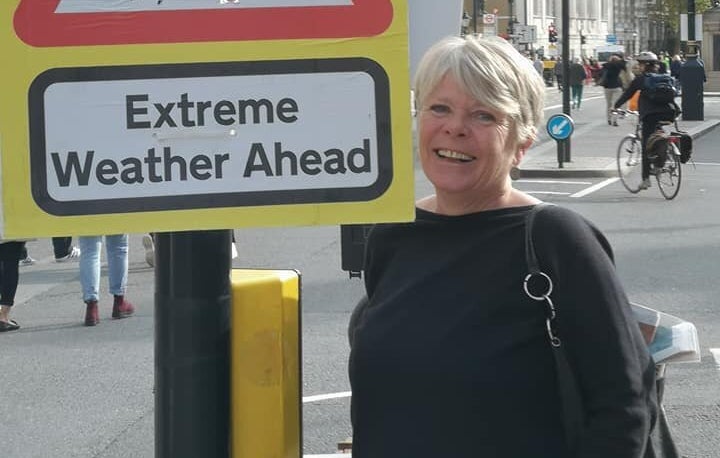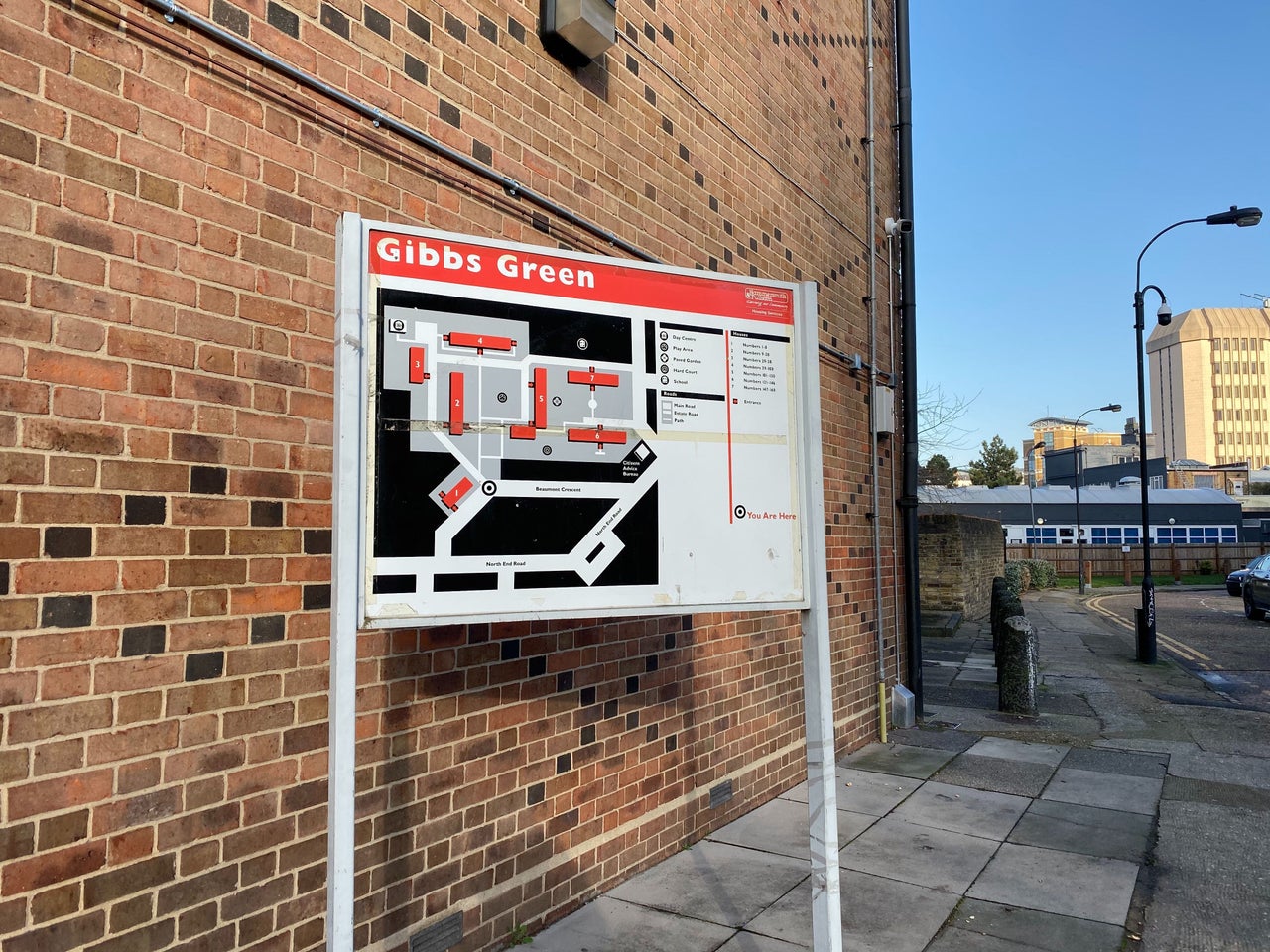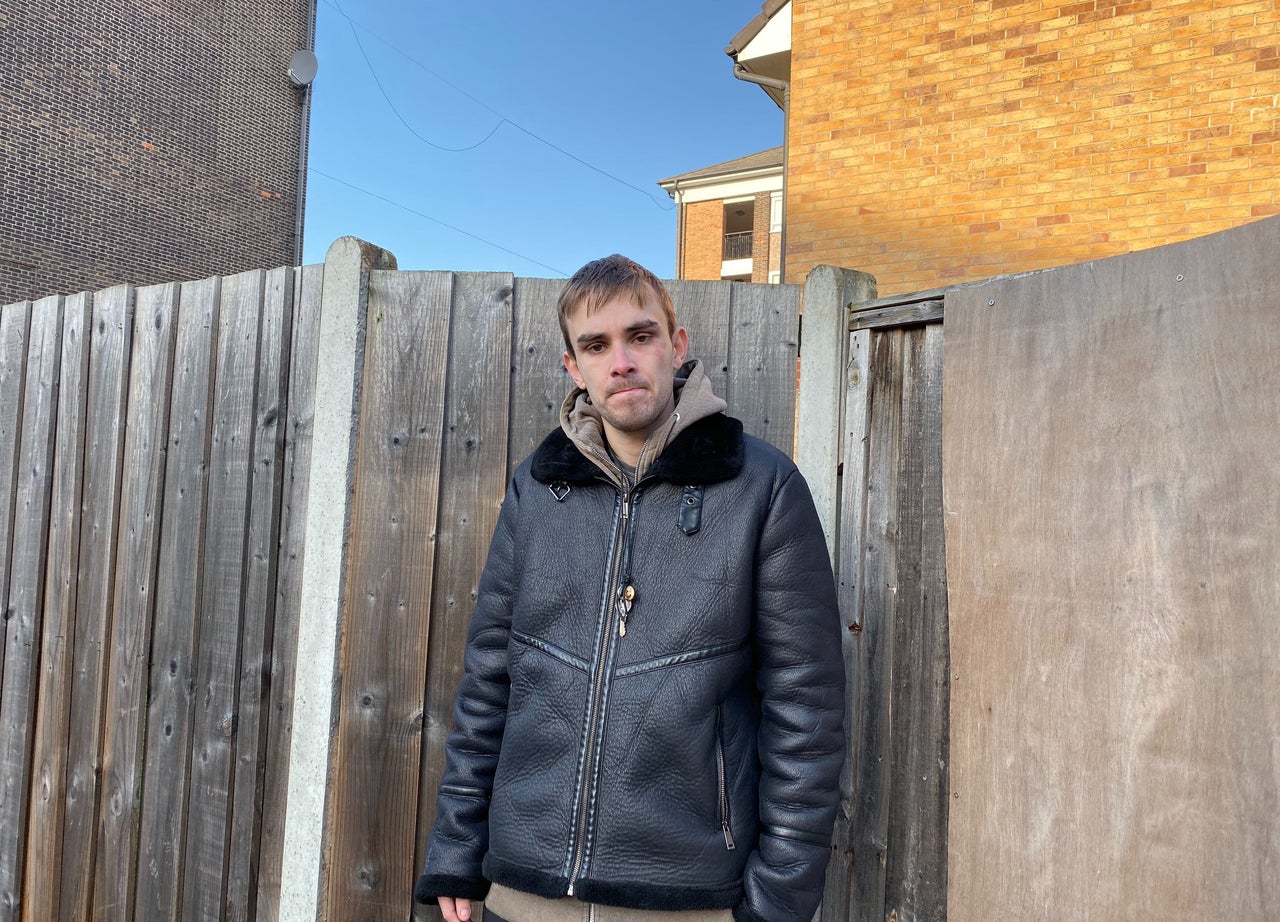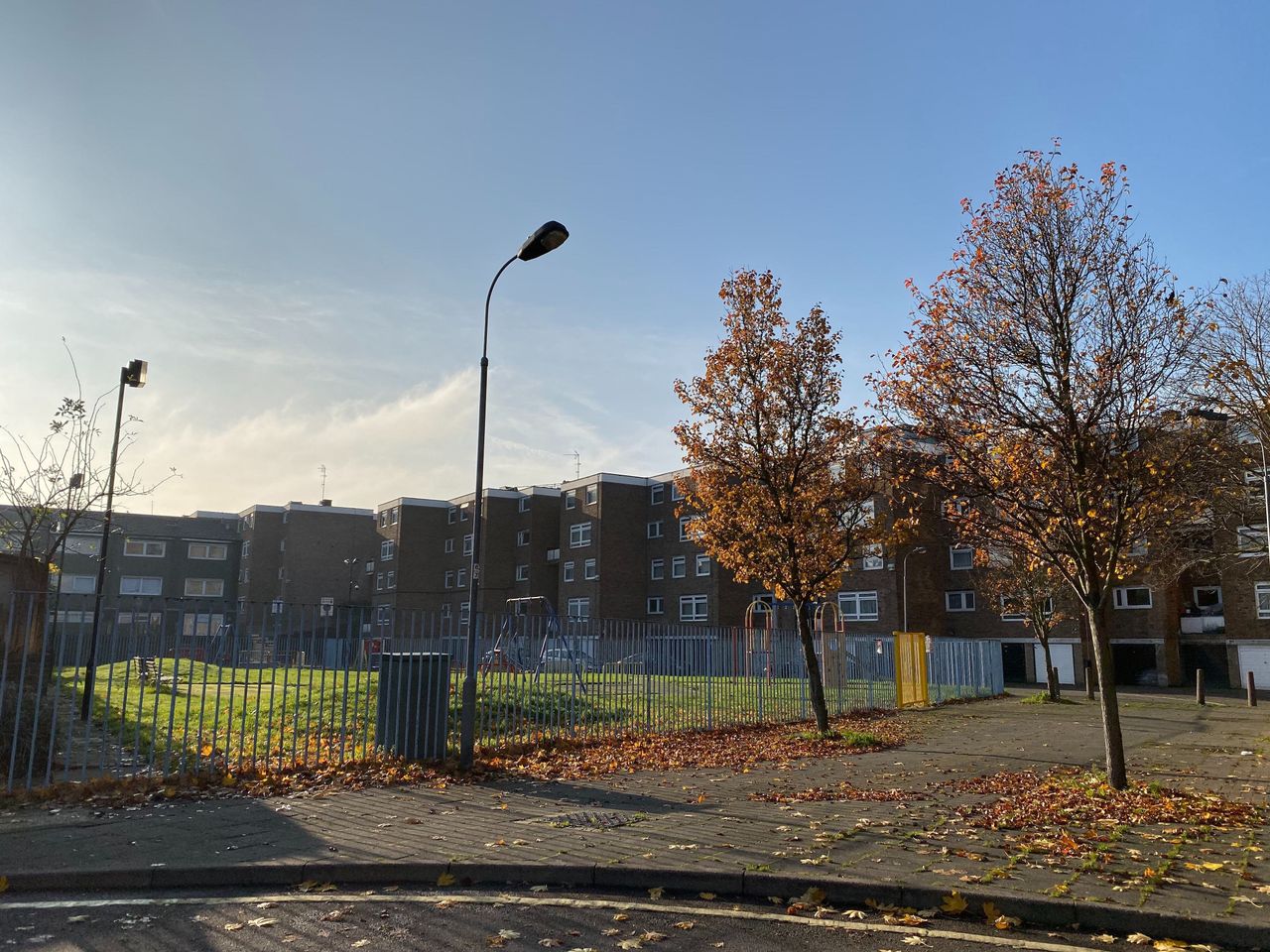“It felt like we could just be rubbed out,” says 58-year-old Sally Taylor. “The people were on the plan – but we were in pencil and everything else was in ink. It didn’t matter where we went.”
For six years, people on the West Kensington and Gibbs Green estates in west London lived under the threat of their homes being demolished.
In 2013, Conservative-controlled Hammersmith and Fulham Council announced it had sold the estates – made up of 760 homes – to property developer Capital and Counties (Capco) for £105m as part of “regeneration” plans for the area.
Under the 77-acre Earls Court master plan, the estates were to be demolished to make way for developments that – it was promised – would create 9,500 new jobs and 7,500 new homes.
With their homes gone, West Kensington and Gibbs Green residents would be rehoused in new blocks built as part of the scheme.
Meanwhile, the “iconic” Earls Court Exhibition Centre – which was opened in 1887 and hosted volleyball matches during the 2012 London Olympic Games – was also demolished in 2015 as part of the plan to redevelop the area.
For many, the news they could lose their homes was “devastating”.
“I felt bitterly angry that suddenly we were geese on golden eggs,” says Sally, a retired nurse who has lived on the estate with her husband and nephew since 1987.
“They didn’t care about us, they didn’t care about people – they cared about profit and that was it. This was about money and nothing else.”
According to the People’s Estates campaign group, apart from the flats set aside to rehouse residents from the estates, just 10% of the new homes planned under the regeneration scheme were set to be ‘affordable’ housing.

Sally adds: “Everything we had ever worked for was under threat. You create a home, don’t you? It’s not just bricks, or a house or a flat. It’s a home.
“You kind of think – we’ve done alright, we’ve made it nice. And then you find out they could just whip it from under your feet.”
But Sally – who is the chair of the West Kensington tenants and residents association – and her neighbours were unwilling to take the loss of their homes lying down.
For the past 10 years, since they first got wind of the regeneration scheme, West Kensington and Gibbs Green residents have been rallying against the plans, battling to save the estates many of them had lived on for decades.
So far, the story mirrors that of many more across London and beyond. The Heygate Estate near Elephant and Castle was demolished between 2011 and 2014 after a bitter fight by neighbours to save it and preserve the community it housed.
On the nearby Aylesbury Estate, a similar process has been under way for years, despite protesters going so far as to squat the empty buildings and tear down a controversial security fence that was built around it.
But something odd happened in West Kensington. After Labour took over in 2014, the residents gained an unlikely ally in the very organisation that had first tried to dispose of the estate. The new-look Hammersmith and Fulham Council began battling the regeneration scheme it had, in a previous incarnation, brought forward itself.
“This was a terrible crime against the people living on those estates,” says Stephen Cowan, who has now been leader of the council for five and a half years. “Their homes were taken against their will, for nothing other than empty promises and a gold-rush property speculation boom.”

In the Labour council’s very first meeting with Capco, “we ripped up the plans for the luxury flats and demanded our estates back”, Stephen says.
“From that point on we made it clear in the marketplace that they were never going to get anything from us until they gave us the estates back.”
Earlier this year, the council threatened Capco with a compulsory purchase order (CPO), which would have effectively blocked redevelopment plans on large parts of the site.
According to Stephen, the CPO would have been “the biggest in post-war history”.
For the people living on the estates, it was a step in the right direction. But they still couldn’t be completely certain about the future of their homes.
Living with that burden everyday is “tiring, upsetting and emotional”, says Sally. “But you’ve just got to get out of bed and get on with life, haven’t you?”
Then, out-of-the-blue – or at least that’s how it felt to residents – it was over.
After a decade of campaigning – a decade of feeling “like everything you own is going to be taken away from you” – last month residents received the news they had been waiting years to hear: their homes had been saved. The council hadn’t even needed to make a CPO.
In November, developer Delancey, along with financial services company APG, agreed not only to buy Capco’s interest in the Earls Court land – vowing to seek a balance of house prices that “will return Earls Court to Londoners” – but to return the estates that sit within them to the council for £105m.
It’s the same price the estates were sold off for six years ago.
“I thought the roof was going to come off,” says Sally about the moment the news was announced at a residents meeting. “It was sort of unbelievable. I was in complete and utter shock.”
It also came as a huge relief to 29-year-old Steven Carolan, who has lived on the Gibbs Green estate with his parents since 2000, when he was at primary school.

“Making people move was getting everyone pissed off and stressed,” he tells HuffPost UK on a freezing Saturday morning on the estate.
His mum and dad were especially worried about being forced out of their home and away from their neighbours.
“They were getting really stressed about it,” he says. “They know a lot more people around here than me – they’re comfortable here.”
The fact that the estates are going to remain standing is “a weight lifted for everyone”.
“You build relationships on the estate,” he explains. “The people on this estate are like family.”
Does the news mean it’s going to be an especially good Christmas for the community? “Jesus Christ, yeah,” Steven laughs.
It’s a prediction shared by residents Thomas and Val, who asked for their names to be changed in this article.
The pair – who are returning to the estates with bags of food shopping when we chat – have lived there for almost 30 years.
People were living with uncertainty about their futures for far too long, they say. “We didn’t know when we might have had to move, or when we might have had to start preparations.”
The whole thing was “ridiculous”, they add. “It just wasn’t good enough.”

Down the road on the West Kensington estate, Abbas Hamaraza is cleaning up his front garden.
“I was really happy to hear the news that the estate is going back to the council – it really is better for all of us,” says the 48-year-old window cleaner.
The father-of-three, who has lived on the estate for the past 12 years, was desperately worried about what the Earls Court plans would mean for his kids, aged seven, 18 and 19, and their educations.
“When we thought it was going be demolished, all we could hope for was that we would get to stay in the borough,” Abbas says.
But it’s not just his children who have grown up in the shadow of the possible demolition.
“I hadn’t appreciated was how much kids on the estate were affected by it all,” says Sally.
“But when our MP came round, they were coming out with emotions I had never even realised they were aware of. They’d grown up with it, thinking that there was no future for us.”
It was a similar story for most people, she says. “Looking back, at the time you don’t realise how heavy it makes you feel.” It gets knitted into your “daily trudge”.
But now, for the first time in years, people are able to look forward. “You can’t invest in something that’s not going to be there,” Sally says.
“But in the last week, almost everyone I’ve met on the street has come up really happy,” she explains.
“And I’ve heard this about half a dozen times from different people: ‘I’m getting a new carpet.’”
In a statement when the sale of the Earls Court project was announced, Capco chief executive Ian Hawksworth said that “having prepared Earls Court for future development”, the company was pleased to have agreed terms for the sale.
Capco sold its interests in the Earls Court project – excluding Lillie Square – to Delancey and APG for £425m.
“Following the disposal, Capco will be a strongly-capitalised property investment business centred around our landmark Covent Garden estate,” he added.
“The business is well-positioned to generate attractive long-term returns for shareholders. Backed by a strong balance sheet and with a significant investment pipeline, our access to substantial liquidity will enable us to capitalise on opportunities.”
However, Capco declined to comment further when approached by HuffPost UK.
